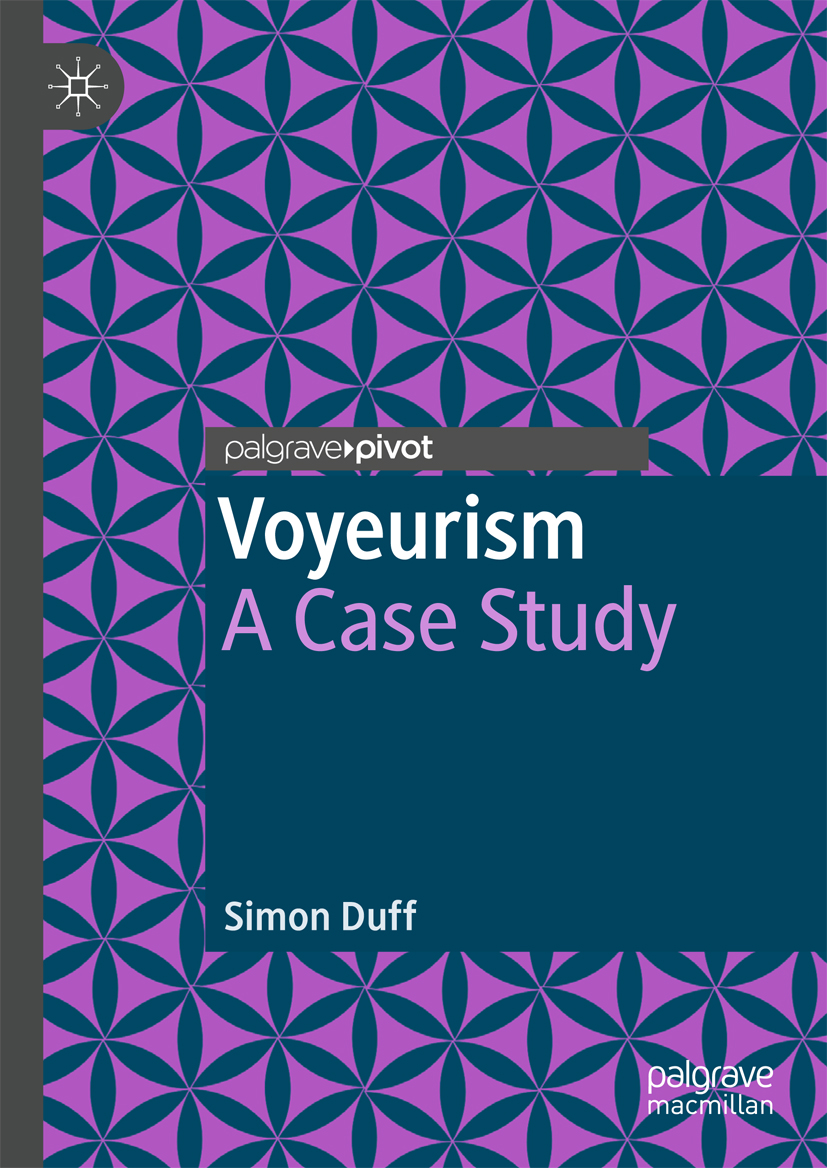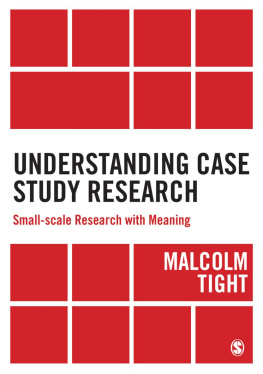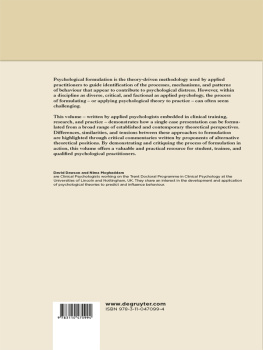Contents
Landmarks

Simon Duff
Voyeurism A Case Study
Simon Duff
University of Nottingham, Nottingham, UK
ISBN 978-3-319-97159-9 e-ISBN 978-3-319-97160-5
https://doi.org/10.1007/978-3-319-97160-5
Library of Congress Control Number: 2018950419
The Editor(s) (if applicable) and The Author(s), under exclusive license to Springer Nature Switzerland AG 2018
This work is subject to copyright. All rights are solely and exclusively licensed by the Publisher, whether the whole or part of the material is concerned, specifically the rights of translation, reprinting, reuse of illustrations, recitation, broadcasting, reproduction on microfilms or in any other physical way, and transmission or information storage and retrieval, electronic adaptation, computer software, or by similar or dissimilar methodology now known or hereafter developed.
The use of general descriptive names, registered names, trademarks, service marks, etc. in this publication does not imply, even in the absence of a specific statement, that such names are exempt from the relevant protective laws and regulations and therefore free for general use.
The publisher, the authors and the editors are safe to assume that the advice and information in this book are believed to be true and accurate at the date of publication. Neither the publisher nor the authors or the editors give a warranty, express or implied, with respect to the material contained herein or for any errors or omissions that may have been made. The publisher remains neutral with regard to jurisdictional claims in published maps and institutional affiliations.
Cover illustration: Melisa Hasan
This Palgrave Pivot imprint is published by the registered company Springer Nature Switzerland AG
The registered company address is: Gewerbestrasse 11, 6330 Cham, Switzerland
For House and KS
Acknowledgements
My clinical colleagues have my upmost respect and admiration for the work that they do, day in and day out, and the inspiration they are to my thinking. All the wrong thoughts are entirely my own. As always, my gorgeous and talented family and friends have been appropriately distracting and given me perspective. Too much perspective.
Contents
Glossary
Bibliography
Index
The Author(s) 2018
Simon Duff Voyeurism https://doi.org/10.1007/978-3-319-97160-5_1
1. Introduction
Simon Duff
(1)
University of Nottingham, Nottingham, UK
Abstract
The opening chapter situates the issue of voyeurism within the context of the difficulties of understanding any form of sexual offending and the importance of considering the broadest range of possible factors that may play a role in the development of sexual behaviour. It also presents the working definition of voyeurism that will be used throughout the book.
Keywords
Voyeurism Sexual offending Frotteurism
Herein is an effort to provide consideration of behaviour and people that have variously been referred to as voyeurism (Karpman, ). So, partly because the space of voyeurism remains uncharted and partly because understanding this area of behaviour is important and fascinating, this project has been undertaken.
Any attempt to understand sexual behaviour is fraught with difficulties. To begin with, a large portion of sexual behaviour happens in our minds and we may have little access to the details of it and may decide that we dont wish to share it accurately, if at all. It is highly unlikely that sexual behaviour is not influenced by both biology and society; both play an important role in determining our individual psychology : what we attend to, what we value, what we are attracted to, what we are allowed to be attracted to, what is legitimate, and what is unholy. In the latter case, religion has had something to say about voyeurism , as it has about many behaviours. In Matthew 5:28, Jesus is reported to have said during the Sermon on the Mount, but I tell you that everyone who gazes at a woman to lust after her has committed adultery with her already in his heart (King James Version). If we consider that at least one role of religion was to exert an element of social control (Raven, ), then it appears that voyeurism has been considered problematic for a lengthy period of time (if something is not an issue then why develop a set of rules in order to control it?). The same rule could also be applied to pornography , strip shows , and celebrity sex tapes .
Our past experiences and the opportunities we will take advantage of in the future are intimately linked to how we understand, think, and behave. This is complicated enough without the addition of genders and sexualities. Having discussed sexual behaviour with colleagues, trainees, and clients over a number of years, I am well aware of the ease with which people can be upset by a view, or a question, or a bias. As upset as you may get, it is unintended. Ultimately, writing within an area that is, academically speaking, relatively unpopulated means that this is something of a journey of exploration, guided by what I think is interesting and important, with the aim of sharing some of the understanding that I have reached, although I will never know if that final goal has been achieved. If it is I hope it provokes people to go further and if it isnt I hope it provokes people to achieve what I havent.
Another important issue to raise is how we are defining voyeurism for this journey. As with many terms, voyeurism has escaped its formal psychiatric definition, which is useful in some ways as it allows us to recognise the continuum of human behaviour rather than categories of normal and abnormal. The negative is that it can be used to describe a range of activities that are considered by someone to be unusual or negative. For example, in South Korea there is a phenomenon that in the UK we refer to as gastronomic voyeurism , they call it broadcast eating; you can view, typically a young, slim woman, eating a huge meal. It is not obvious that there is any kind of sexual element and some commentators have suggested that it fulfils an important social role for single people who would otherwise dine alone, as people can interact with the eater. Viewers can also make financial donations. Voyeur is also used to describe people who spend time watching reality television, reading celebrity magazines, and focussing on other peoples lives. As Levy (, p. 80).
For our purposes, what makes a behaviour or group of behaviours fit within the range of voyeurism is that it involves observation of someone or something, it is intended to be secret, and that there is some form of sexual element linked to it. In this way, behaviours that are not observational and not sexual are not included (thus, intellectual writing and watching reality television) and neither are behaviours that involve sexualised observation but are not fully secret, for example, watching strip shows or sexual live-feed videos. The latter will also disallow pornography , whether professional or amateur (e.g. celebrity sex tapes or revenge pornography where the subject(s) know that they are being filmed, even if they do not know how it might be used later), but secret pictures or recordings by a person that may be used later do fit the category of voyeurism (for example, Client A, as described by Mann, Ainsworth, Al-Attar, & Davies, ) but this is not an approach that will be taken here in part because it may be difficult to differentiate between the two because victims are unlikely to know and perpetrators may lie.











